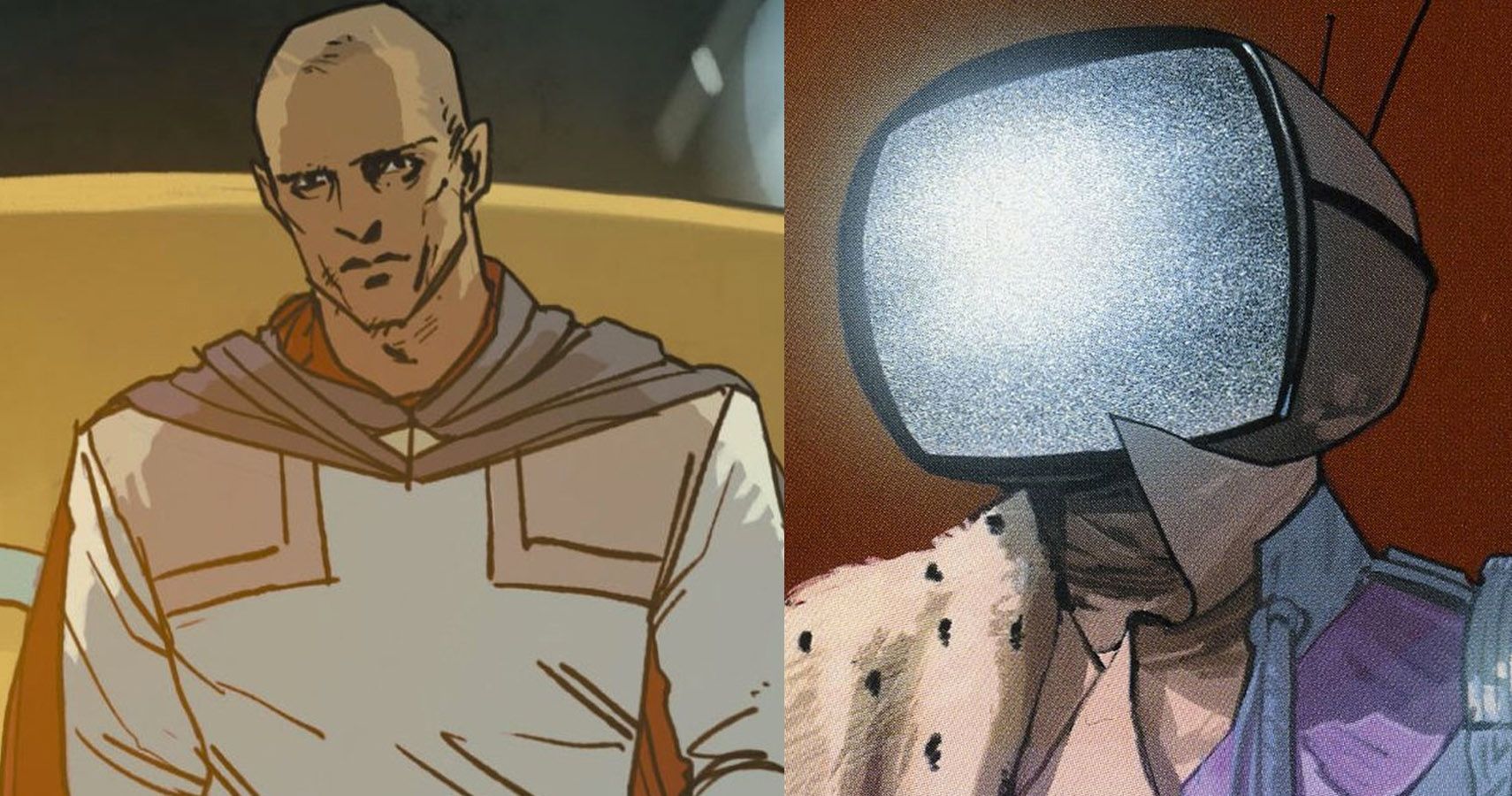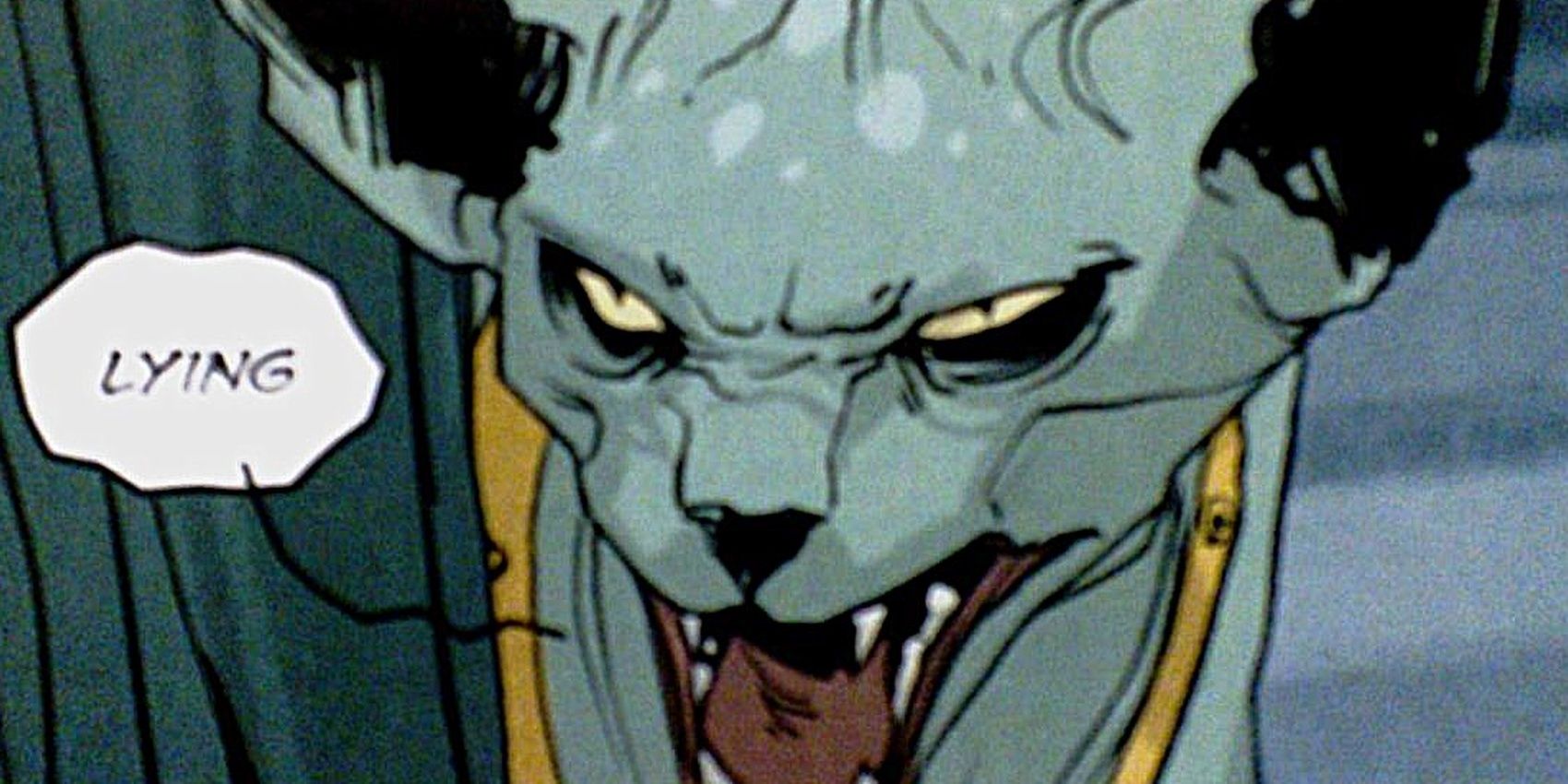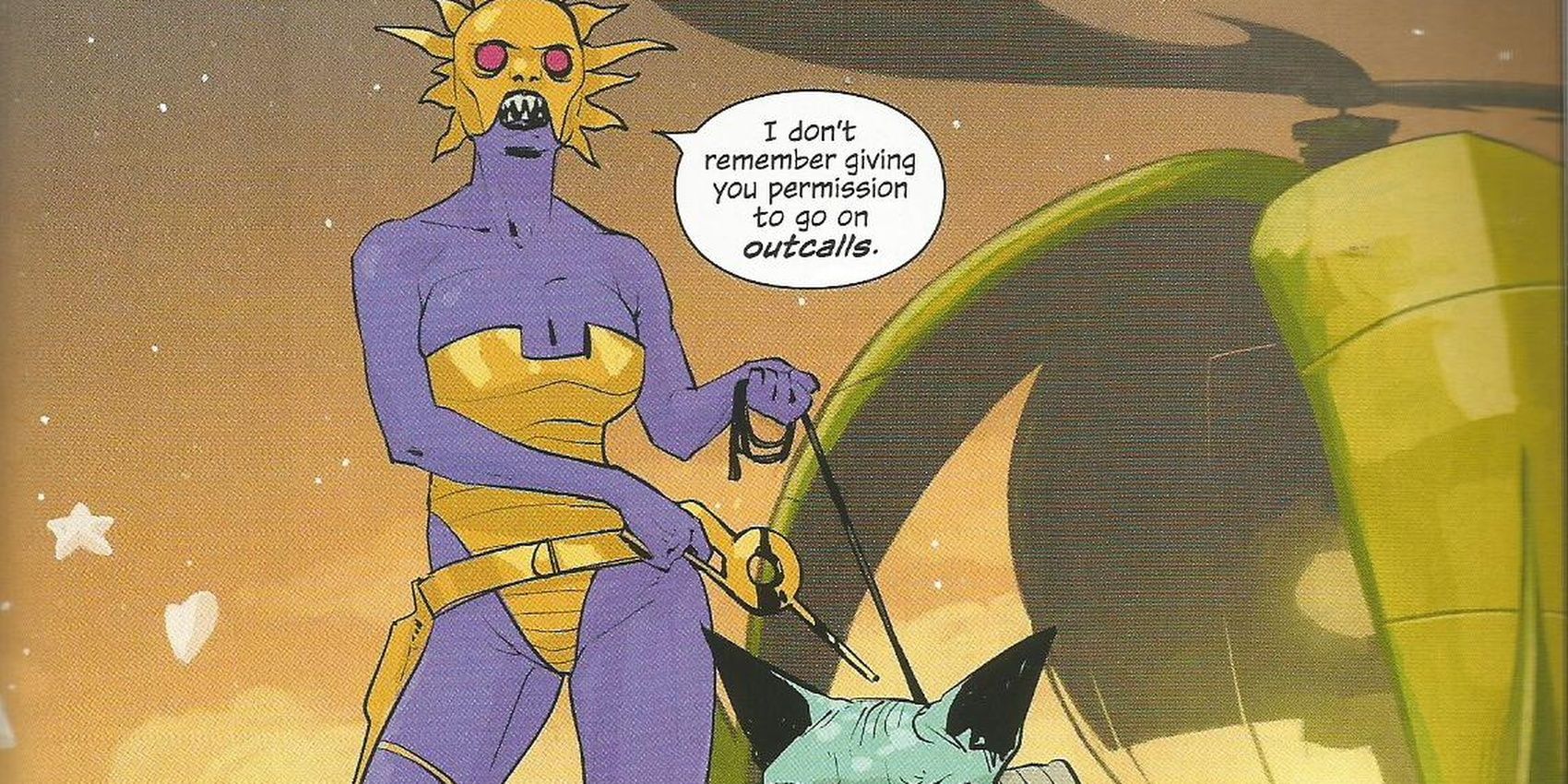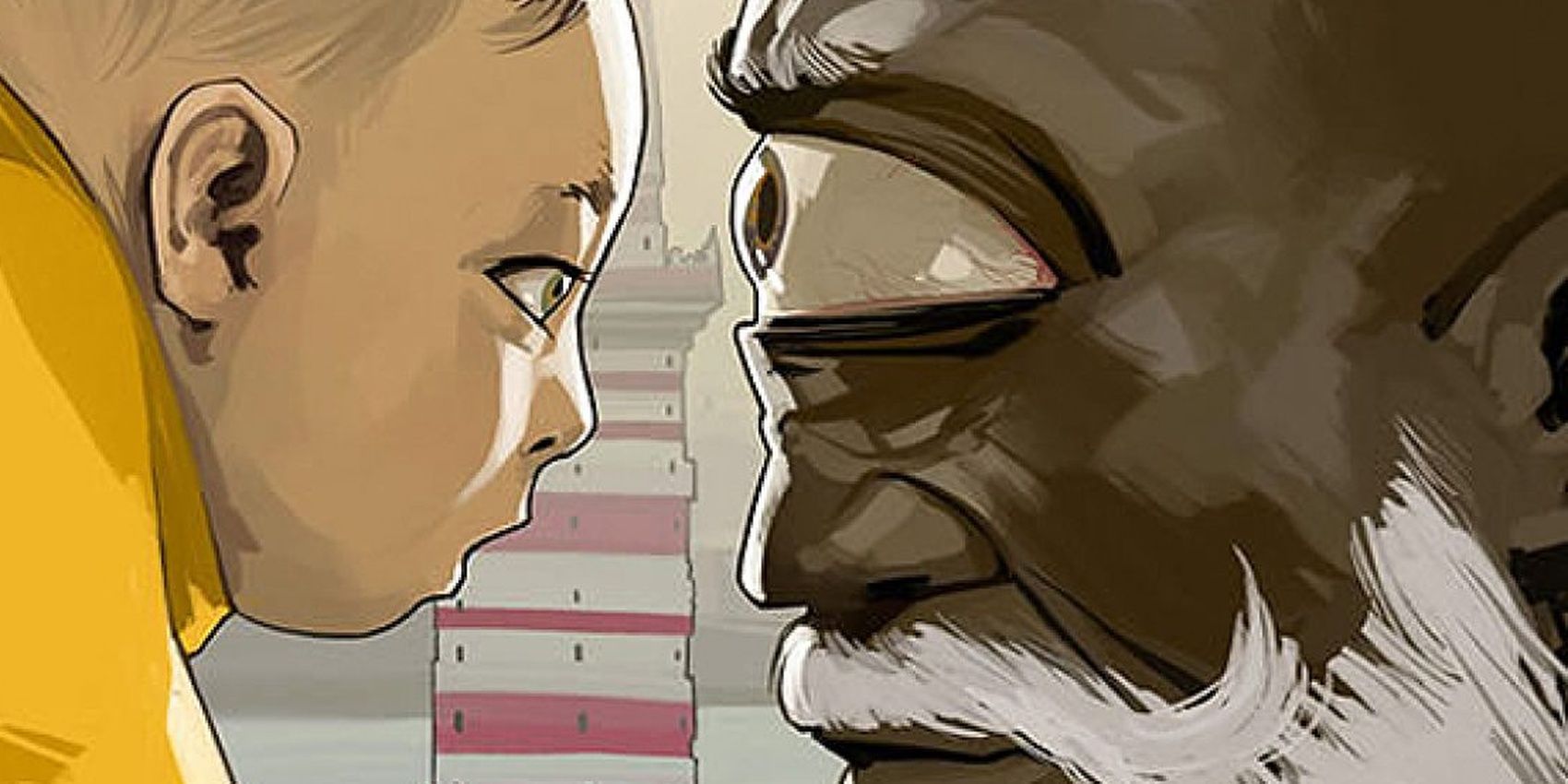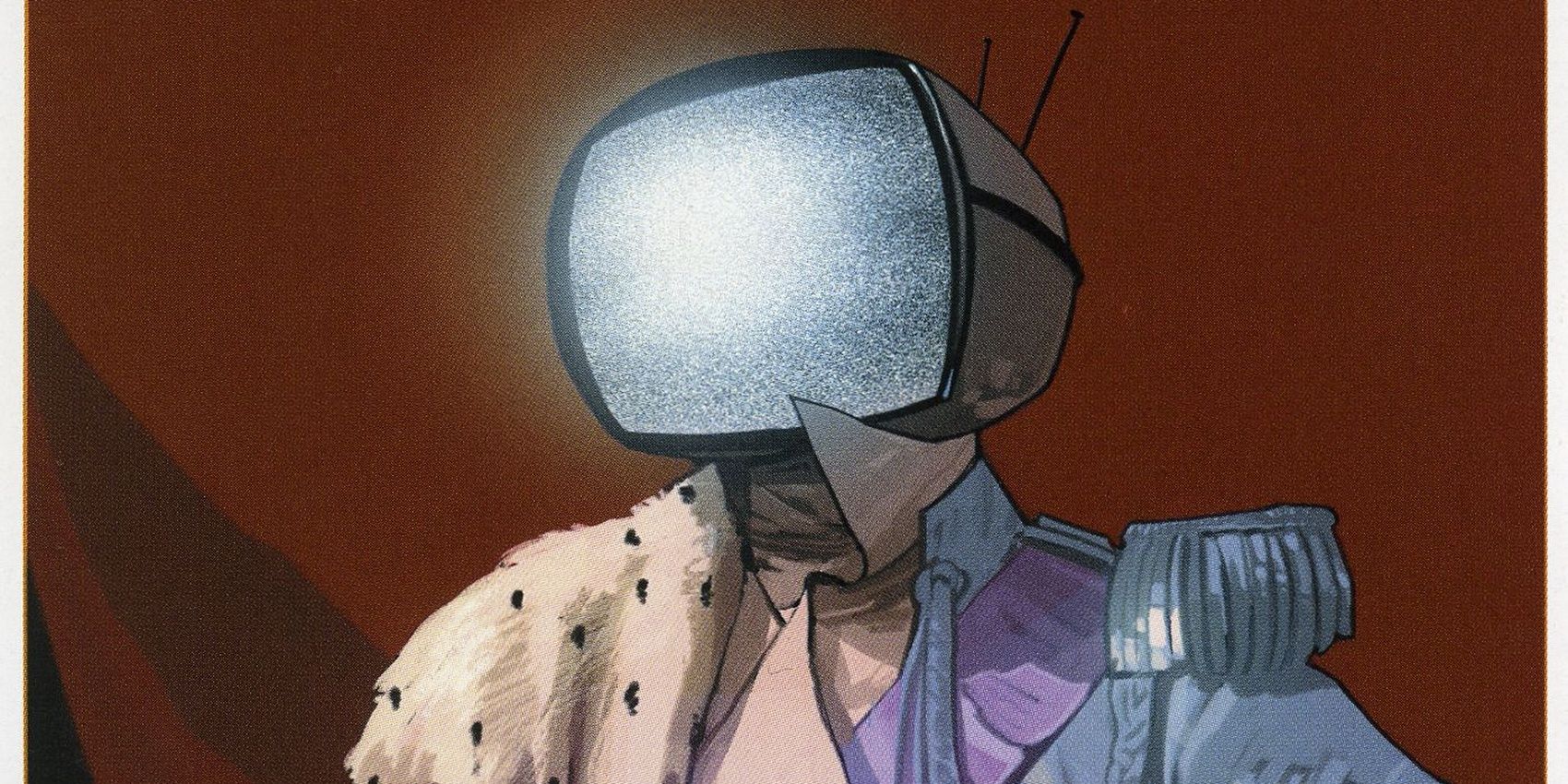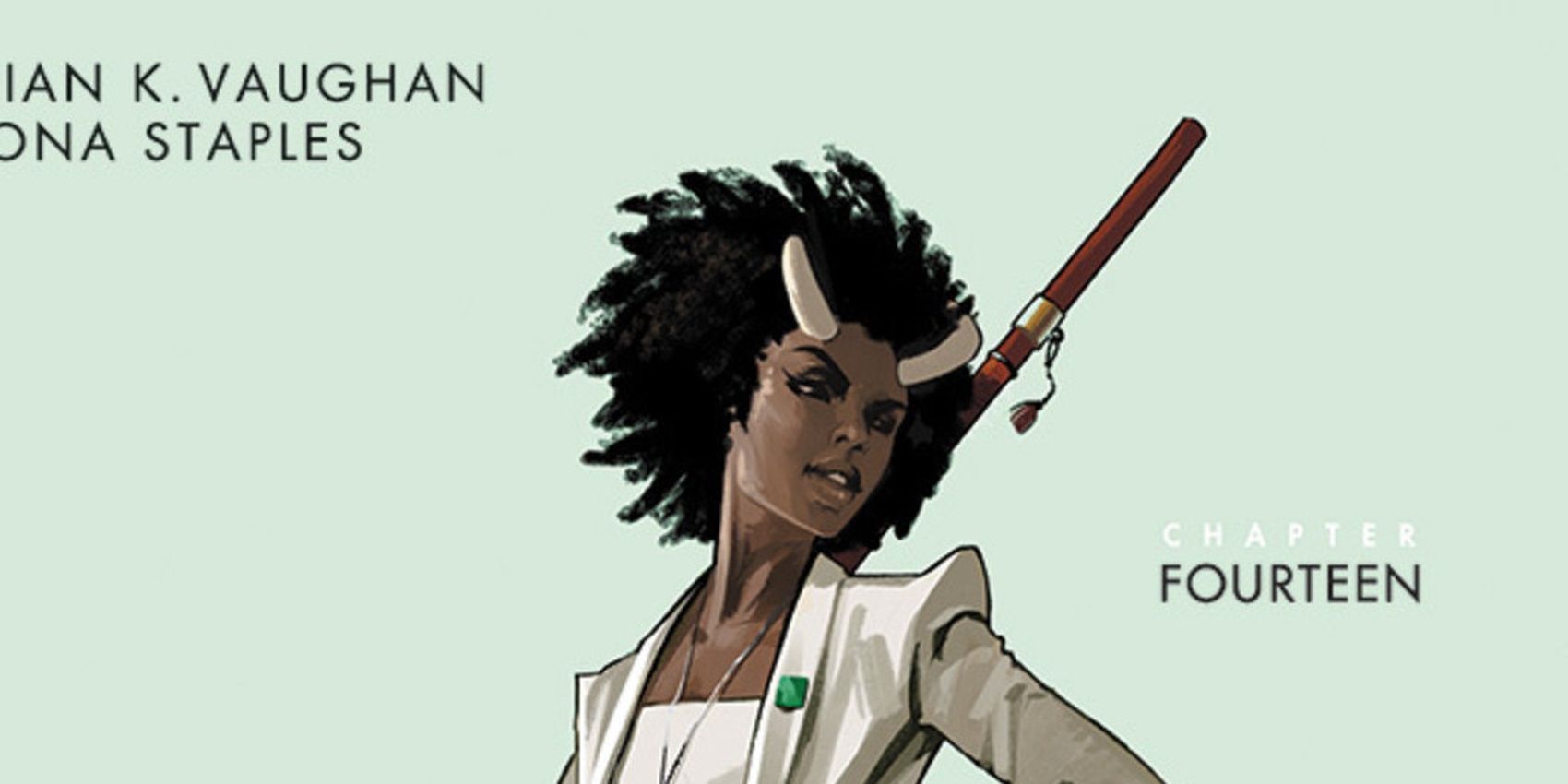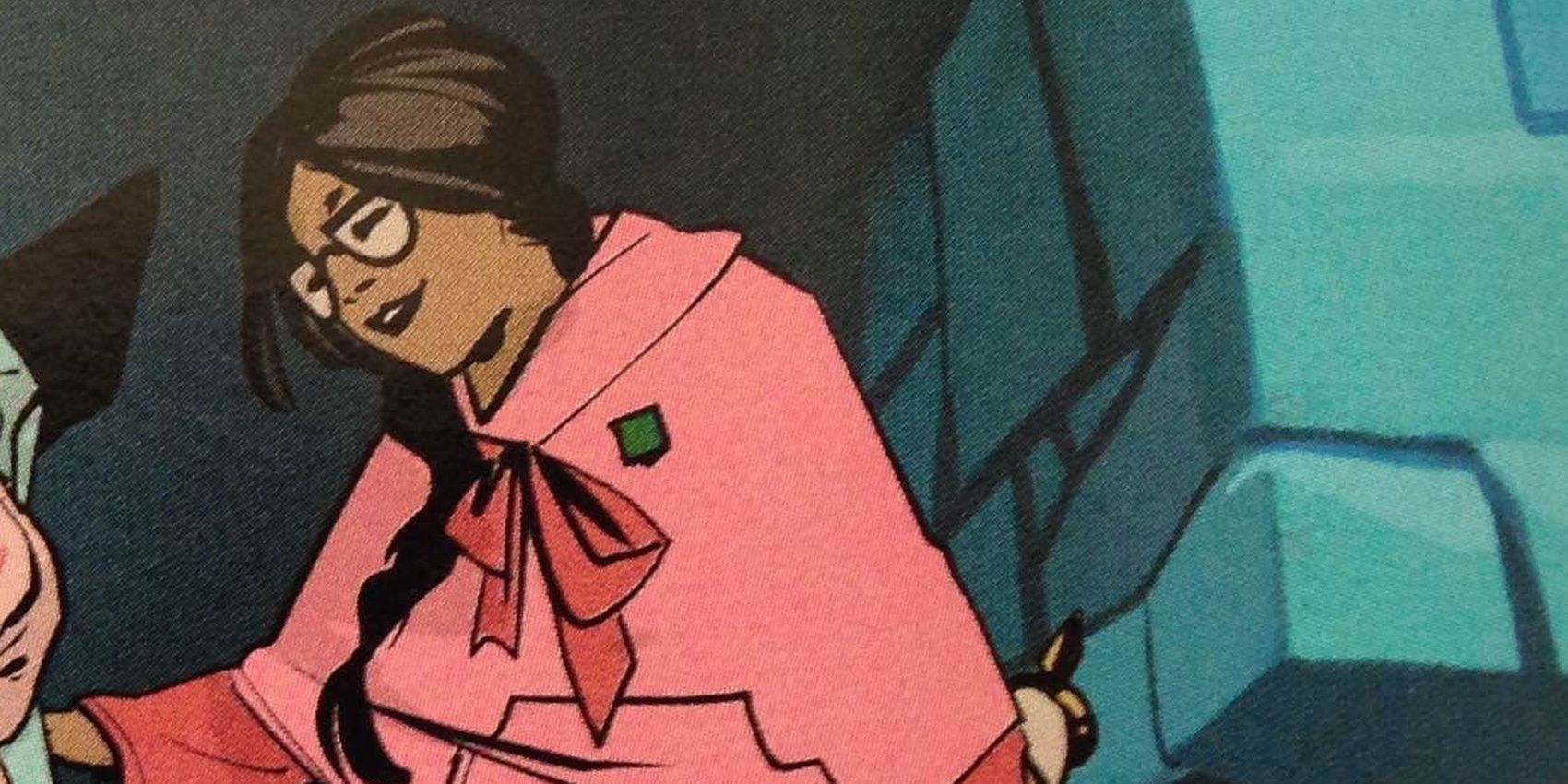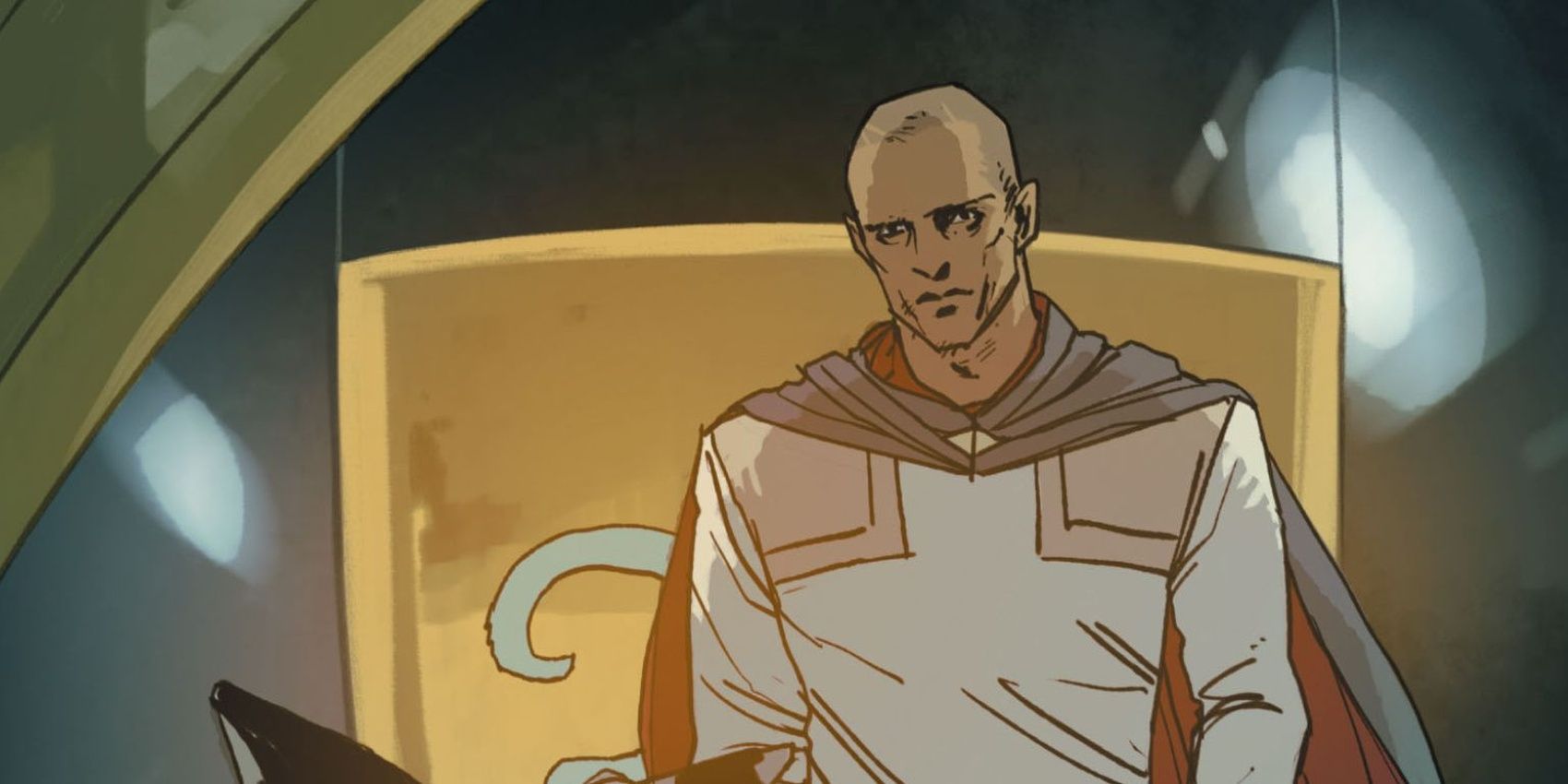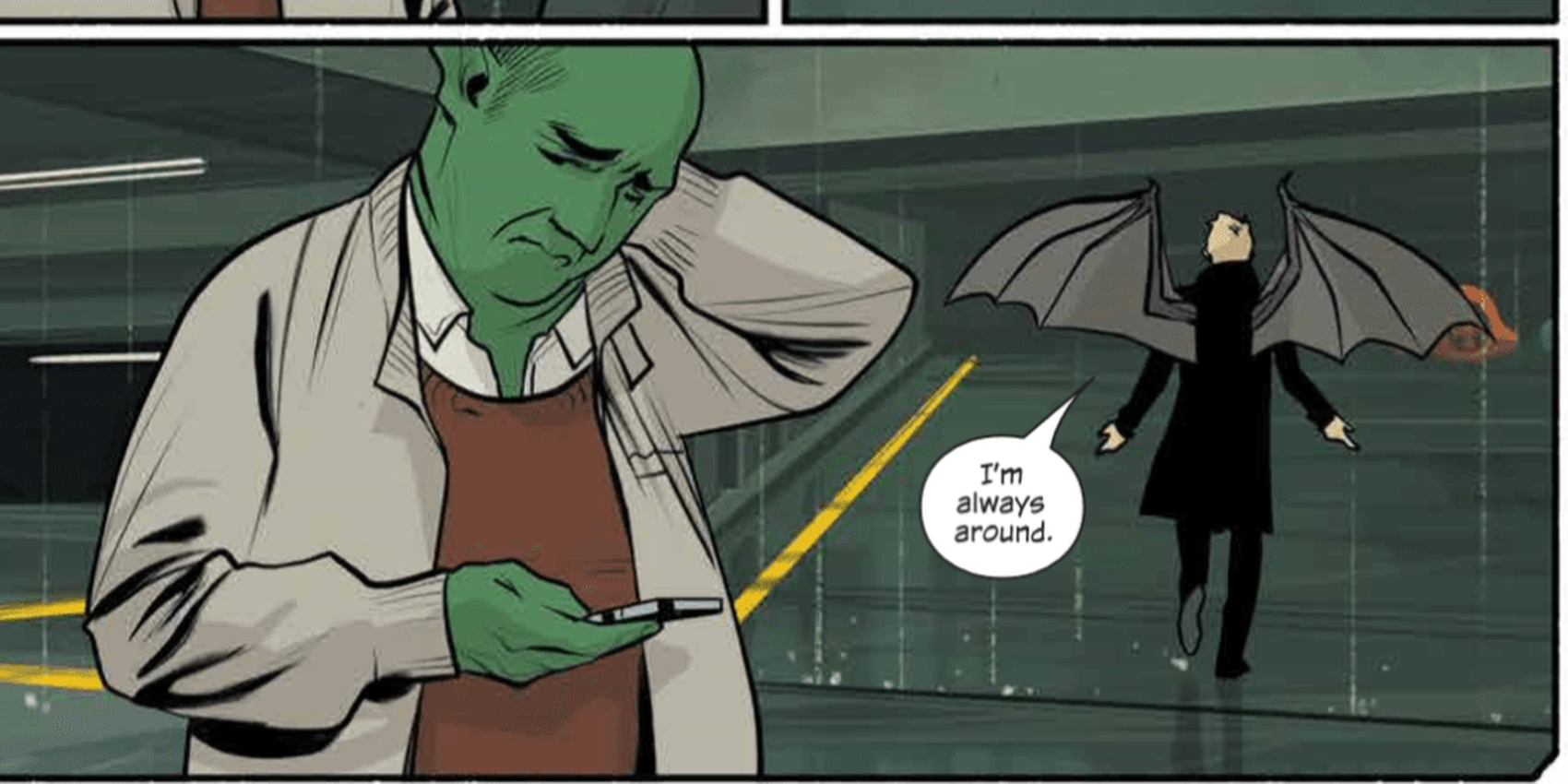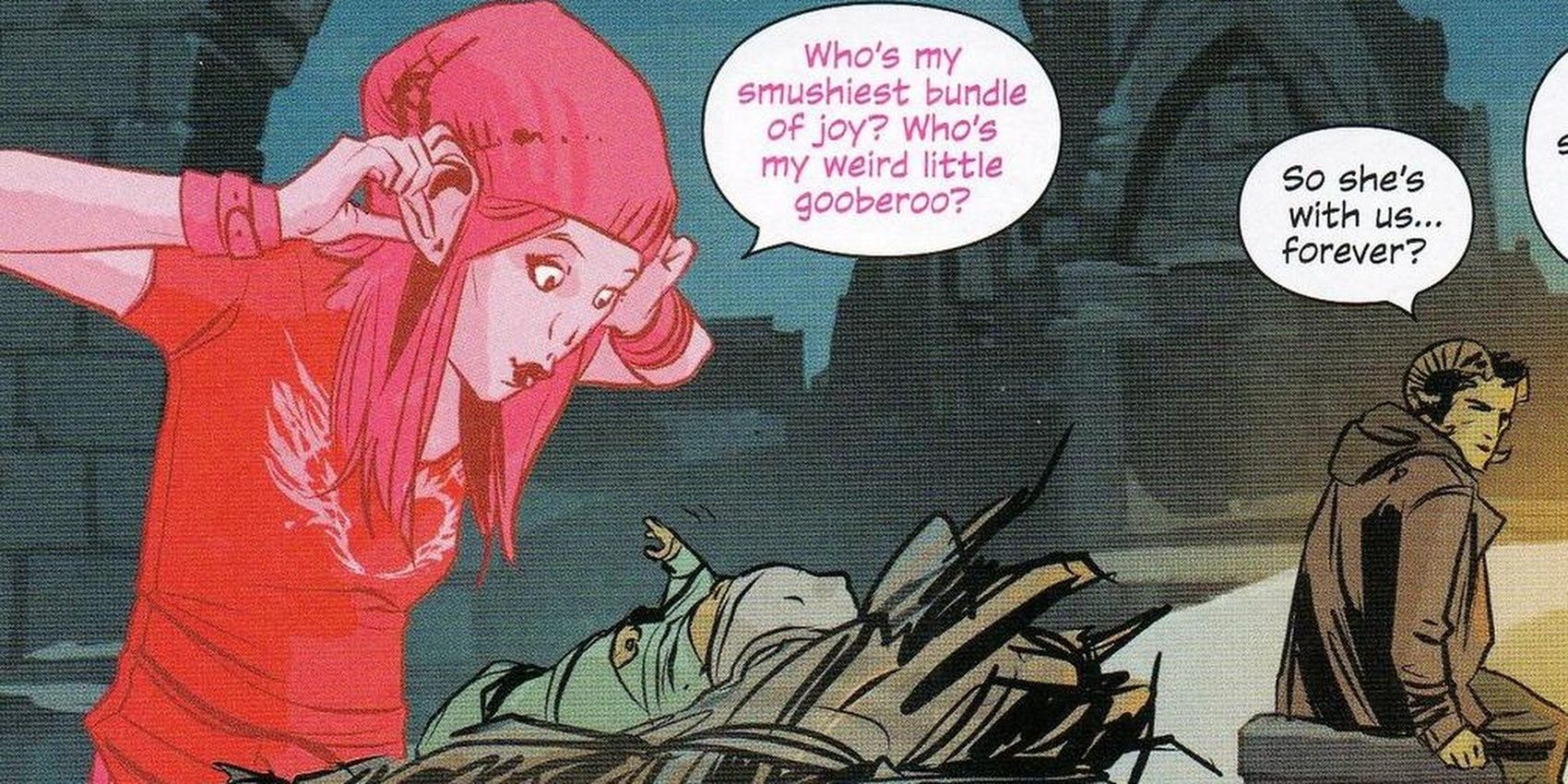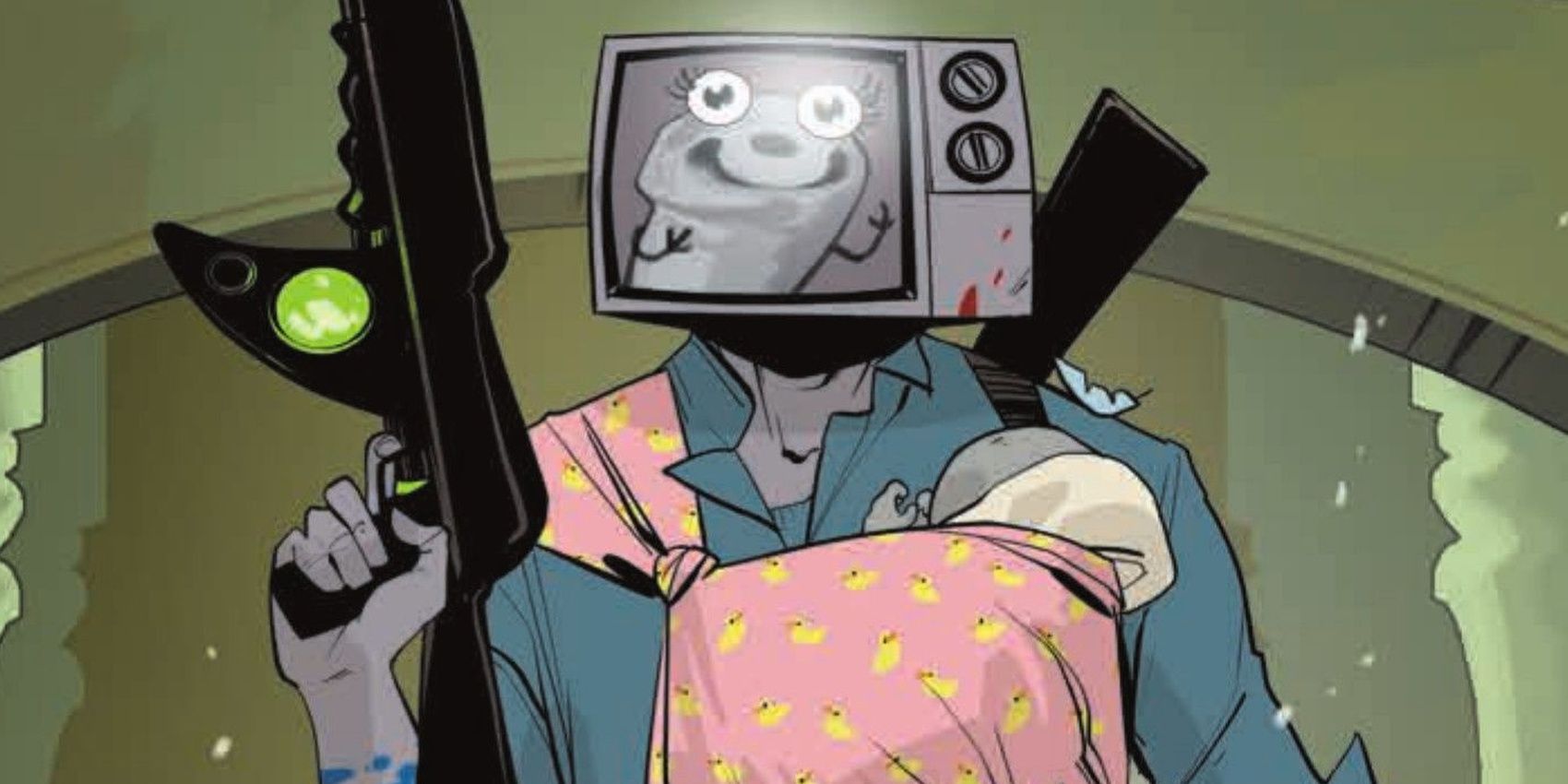Saga, like all Brian K. Vaughan books, goes to great lengths to humanize the characters that populate the narrative. Sure, that is the standard operating procedure for storytelling as a whole, but when a host of the character's physiologies resembles the fading remnants of a psychedelic fever dream, deft characterization goes a long way.
Vaughan bestows grace in unexpected avenues, by rounding even the most ancillary characters within the comic on either side of the moral fence. Consequently, fans of Saga feel as passionately about secondary characters as the protagonists.
10 Loved: Lying Cat
If the internet has solidified one fact its that people love cats- to an irrational degree. Bursting onto the pages of the comic early in the series, Lying Cat took this concept and ran wild with it. Gifted with the peculiar propensity to separate truth and falsehood, Lying Cat became the de facto mascot for the series, despite trying to murder the protagonists of the book in Alana, Marko, and Hazel. The craziest part is that Lying Cat's dialogue only consists of one word: "lying".
9 Hated: Mama Sun
Presiding over the illicit and tawdry brothel planet, aptly named Sextillion, as the head Madame, Mama Sun rules with an iron fist. Debuting as the proverbial roadblock preventing The Will- more on him shortly- from freeing a child sex slave, Mama Sun instantly earns the ire of the fandom. Mama Sun's tenure in the story is relatively short, clocking in under thirty issues, but each of her outings is as distasteful as the last. Mama Sun exposes the darkness discretely lurking in the erotic wonderland.
8 Love: D. Oswald Heist
Acting as the catalyst for Alana and Marko's decision to rebel from the war effort of their respective homeworlds, D. Oswald Heist, uses his scant number of issues in the comic wisely. Brandishing a ton of pithy observations and memorable dialogue, Heist often ends up inspiring the reader as much as the characters within the comic.
Dedicated to pacifism, D. Oswald Heist seemingly serves as a self insert for Saga's aforementioned creator, Brian K. Vaughan; making his unfortunate death all the more jarring and painful.
7 Hated: Prince Robot IV
Normally, tragedy tends to make a character relatable and engaging, but Prince Robot IV, who practically runs on a series of traumatic experiences, stirs revile like no other character in Saga. Tasked with executing Alana and Marko by his royal bloodline, before he's allowed to see his newborn son, IV is a relentless and monastically focused monster- until he's not. Softening slightly as the comic continues, IV never truly atones for being largely responsible for the death of two beloved characters early in the story.
6 Loved: Gwendolyn
Casually foreshadowed by Marko in issue 4, Gwendolyn arrives in the series with a fury. Although open about her intention to murder the protagonists, even going as far as aligning with the assassin dispensed to end them, Gwen is so charming and likable that the reader barely remembers her misgivings with Marko. While she is personally responsible for the death of D. Oswald Heist, fans chalk the moment up to confusion rather than malicious intent. Gwen is Saga's personification of the term "black girl magic".
5 Hated: Sophia
The intense revile Sophia experiences within the fandom centers around a single moment. After risking his life to rescue Sophia from the despotic Mama Sun and her brothel/ bastille, The Will- a beloved character as well- attempts to adopt Sophia as his daughter.
At first, Sophia appears to be a normal girl recovering from trauma, but the reader's sympathy wanes once she stabs The Will in the neck. However, the incident should merit some forgiveness from the fandom, as Sophia wasn't in her right mind.
4 Loved: The Will
As yet another character dispatched to murder Saga's protagonists, The Will, partner to Lying Cat, shockingly has garnered a fervent fandom that rivals Alana and Marko's. Truth be told, The Will too cool to not be loved. Whether it's his steely demeanor, his sleek arsenal of lethal weapons, or the yet unused cowl on his cape, The Will exudes enough charisma to spare. What solidified his status among Saga's elite tier of characters in the paradoxical morality he conveys despite the barbarism of his profession.
3 Hated: Special Agent Gale
Whenever Special Agent Gale shows up, fleeting though his appearances may be, fans of Saga are guaranteed a stomach-churning experience. From the first issue, Gale is seen to be the main antagonist of the series by issuing the hit on Alana and Marko. That alone makes him plenty loathsome, but it's his callous manipulation of Prince Robot IV which propels him into full heel territory. Since the actual character that wants Alana and Marko dead remains a mystery, Gale is forced to fit the bill.
2 Loved: Izabel
Leave it to Saga to have fans emotionally invest in the teenage ghost of a brutally severed torso. Izabel, Hazel's babysitter, has been met with universal acclaim amongst fans of Saga since her debut.
Much like the other characters mentioned on this list, Izabel's connection with fans doesn't stem from her powers, which are impressive in their own right, but her character. Frequently, Izabel is the wisest character in the series, contrary to her perceived "youth". Marko and Alana wouldn't have survived without Izabel's aid.
1 Hated: Dengo
With a single ominous panel, fans were bracing for the inevitable evil Dengo was set to wreak within the pages of Saga, and they didn't have to wait long. In the issue after his debut, Dengo murdered Princess Robot, her guards, her servants- many of whom were his coworkers- and absconded with her newborn son. Although his message of dismantling the hierarchical structure of the Robot royalty is relatable, his method of enacting change- typically with copious bloodshed- dilutes whatever point he intended to make.

